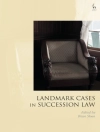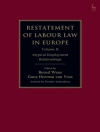How is the distribution of power between the different levels of the contemporary constitution to be policed? What is the emerging contribution of the courts in regard to EC law, the Human Rights Act 1998 and devolution? What roles should be played by the legislative and judicial bodies at each level? Who should have access to the courts in public law disputes, and on what grounds should the courts regulate the exercise of public power? Can a coherent distinction be maintained between public and private law? These essays by leading public law scholars explore the allocation and regulation of public power in the United Kingdom.
At the beginning of the twenty first century it appears that the traditional Diceyan model of a unitary constitution has been superseded as power has come to be distributed – particularly in the post-1997 period – between institutions at European, national, devolved and local level. Furthermore, the courts have come to play a powerful role at all levels through judicial review, while forms of regulation and contracting, together with other informal techniques of governance, have emerged. The contemporary constitution can be characterised as involving a multi-layered distribution of power – a situation which raises many key questions about the role of public law. The essays in this important collection tackle such questions from a variety of perspectives, aiming between them to provide a dynamic picture of the role of public law in the contemporary, multi-layered constitution.
Mr Nicholas Bamforth & Peter Leyland
Public Law in a Multi-Layered Constitution [EPUB ebook]
Public Law in a Multi-Layered Constitution [EPUB ebook]
购买此电子书可免费获赠一本!
格式 EPUB ● 网页 448 ● ISBN 9781847316875 ● 编辑 Mr Nicholas Bamforth & Peter Leyland ● 出版者 Bloomsbury Publishing ● 发布时间 2003 ● 下载 3 时 ● 货币 EUR ● ID 3374607 ● 复制保护 Adobe DRM
需要具备DRM功能的电子书阅读器












